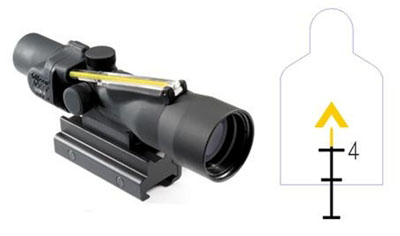Firearms in America
I do my best to provide unbiased information pertaining to different types of firearms, manufacturers, and laws. Certain sections of this site focus on specific areas and topics related to firearms. I only post information on topics and items that I can speak intelligently about. If I am not educated on a specific topic or item then you will not find it here.
Now for the disclaimers; I am not a gunsmith, lawyer, law enforcement officer, or gun control lobbyist. Nor do I play one on television. Any information contained on this site contains no warranty or guarantee of any kind. This site exists for the sole purpose of being useful to those who are less educated about firearms.
RELOADING: gunpowder burn rates
Here is some quick information and a demonstration regarding different types of gunpowder. I discuss different characteristics such as weight, volume, and burn rate.
AR-15: single stage vs. two stage trigger
If you look for an aftermarket AR-15 trigger, you'll notice more variations than wrist watches. There are many different makes and models all claiming they are better than the next. One decision to make is if you want a single stage or 2 stage trigger.
There is a fundamental difference between the them. Most stock AR-15 triggers are two stage triggers. Meaning, there are two different "stages" before the weapon actually fires. The term stage refers the to small amount of movement by the trigger itself.
The first stage occurs when your finger makes contact with the trigger and take takes up the "mush" or "slack." Experienced shooters are used to doing this with nearly every weapon as most have 2 stages triggers.
The second stage is much shorter. There is less distance for the trigger to travel before actually breaking the shot. This stage has no slack at all and is usually very light and crisp on high-end triggers.
In contrast, the single stage trigger has no first stage, just a second. This means you have a stiff pull usually harder than the 2nd stage of a 2 stage trigger.
So what is the advantage of a single stage trigger then? A single stage trigger will feel very similar to anyone used to shooting single action revolvers. It mimics a single action revolver trigger in the fact that is has a very short amount of travel and a it feels "harder" than a 2 stage.
So what is the difference between a high-end and cheap 2 stage trigger? Low-cost or OEM 2 stage triggers are usually associated with "sloppy take-up" and inconsistent pull weights. High-end triggers are designed and manufactured to reduce or elimnate these problems. While it may be hard to justify the $200+ price tag you will be surprised how much better a high-end trigger really is.
TA33 ACOG eye relief
It's no secret that ACOG rifle scopes are some of the most expensive mid range optics. They are popular choices for fixed focal power on AR-15 rifles. There are also many variants of the ACOG with different reticles, bullet drop compensation, and focal powers.
 Each model has their strengths and weaknesses. I choose the put the ACOG TA-33 .223
Each model has their strengths and weaknesses. I choose the put the ACOG TA-33 .223
on my rifle for several reasons:
- Size
- Weight
- Clarity
- Durability
- Eye relief
Some of these features are not specific only the TA-33, but I thought they were worth mentioning. The size and weight of these optics are nothing short of amazing. The materials used allow the optic to perform in a very compact form. The TA-33 is one of the best optics on the market for its weight. The smaller size allows for less crowding on top of the gun which gives shooters a less obstructed view downrange.
The clarity of ACOG is phenomenal. The glass is clear and bright; even in low light. The combination fiber optic/tritium system does a great job of illuminating the reticle.
ACOGs are known for their outstanding durability which means they can be dropped and banged without worry. They can stand up to full-auto fire and are also submersible.
Above all, the reason I choose the TA-33 was the eye relief. While it only has a 3x power instead of the popular 4x on the full size ACOG, the longer eye relief makes it a more versatile optic. I can "almost" use it like a red dot sight (with some parallax). The long eye relief allows me to take quick shots on target with a consistent check weld. If I need to make a longer shot, I can tuck the gun in a few inches closer to get a better view downrange.
Expensive? Oh yea, but this is one of those buy once cry once situations. I've talked to a lot of shooters over the years, and I've never met one who says the regret buying the ACOG.
 12/01/11 11:19:00 am,
12/01/11 11:19:00 am, 